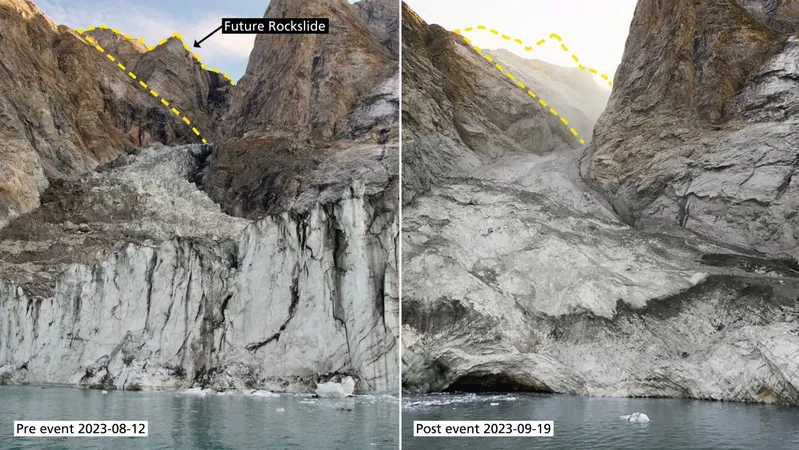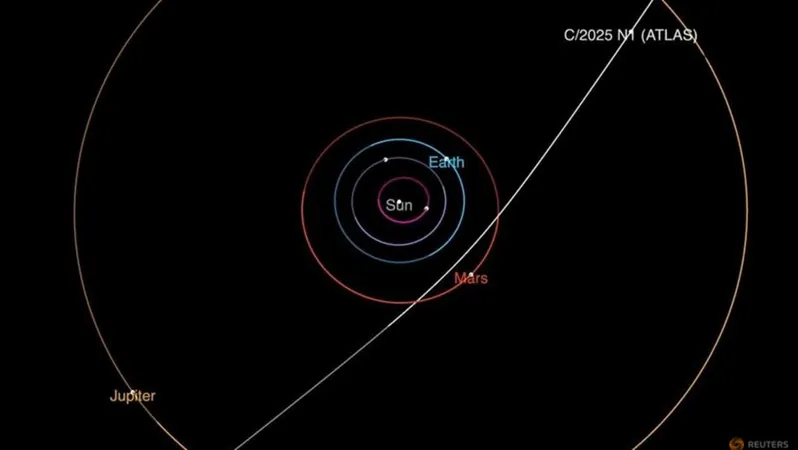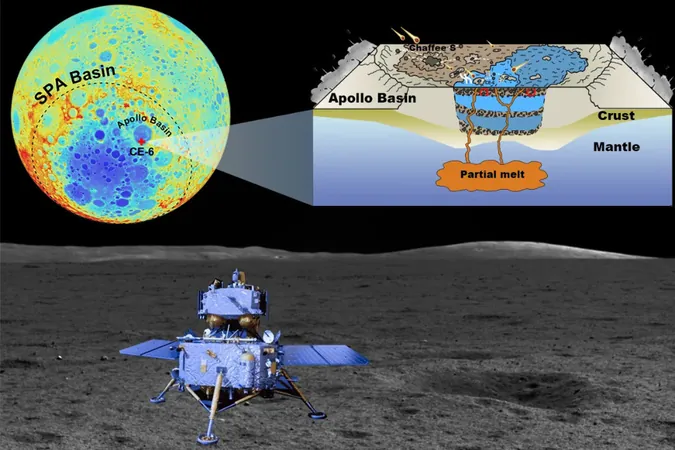
Unraveling the Enigma of the Earth’s Mysterious Hum
2024-09-25
Author: Wei Ling
Introduction
Last September, an enigmatic rumbling that echoed through the Earth left scientists scratching their heads. It wasn’t an earthquake, yet the signal was undeniable and strong. Nearly a year later, researchers have cracked the code behind this geological mystery, revealing a massive landslide that triggered a tsunami in Dickson Fjord, Greenland, producing an astonishing phenomenon known as a 'seiche.'
The Start of the Mystery
It all began on September 16, when seismographs worldwide picked up a perplexing pattern of slow vibrations unlike the frantic lines typical of earthquake activity. This strange signal, reminiscent of a low hum, peaked every 92 seconds and persisted for a remarkable nine days before gradually fading away.
Scientific Investigation
“The phenomenon was unprecedented,” noted Kristian Svennevig, a geologist from Denmark. Dubbed the 'Unidentified Seismic Object' (USO) by many in the scientific community, the origins of this signal left experts stumped.
Collaboration and Discovery
In response to the mystery, approximately 70 scientists from 15 countries collaborated to delve deeper into the data. A critical breakthrough emerged when researchers connected the rumblings to a landslide event in Dickson Fjord. The fjord, characterized by tall cliffs flanking a narrow channel of deep water, became the site of a significant geological incident when a colossal piece of rock—comparable in size to five football fields—plummeted into its depths after a glacier, weakened by climate change, gave way.
The Tsunami
The resulting tsunami towered at an impressive 650 feet (200 meters). Fortunately, the fjord was empty of boats at the time, preventing any loss of life—an unexpected stroke of luck in a dramatic scenario.
The Seiche Phenomenon
While the tsunami was evident on the seismographs, it alone did not fully account for the prolonged odd signal. This prompted scientists to explore what could happen in a confined space like the fjord following such an immense wave. They investigated the concept of a seiche—a wave phenomenon that oscillates back and forth in a basin, much like the water in a bathtub swaying when disturbed.
Geographical Modeling
By modeling the unique geography of Dickson Fjord's seabed, they discovered that the landslide-induced tsunami would indeed generate a massive seiche. The simulations confirmed the real-world observations of this persistent wave rebounding in the fjord for nine consecutive days, sending vibrations that traveled far beyond Greenland, captivating the attention of geologists around the globe.
Implications of the Event
As unique as this event may seem, experts caution that it may not be an isolated occurrence. The landslide was a stark reminder of the impacts of climate change as rising temperatures lead to more glacial melt. This phenomenon could destabilize mountains worldwide, increasing the likelihood of similar events in the future.
Conclusion
The research not only sheds light on an extraordinary geological occurrence but also serves as a poignant warning about the ongoing changes to our planet. This incident could be one of many as climate change continues to alter natural landscapes, posing both immediate and long-term threats to coastal regions and the communities that inhabit them. Stay tuned as scientists continue to unveil the secrets hidden beneath our planet’s surface!



 Brasil (PT)
Brasil (PT)
 Canada (EN)
Canada (EN)
 Chile (ES)
Chile (ES)
 Česko (CS)
Česko (CS)
 대한민국 (KO)
대한민국 (KO)
 España (ES)
España (ES)
 France (FR)
France (FR)
 Hong Kong (EN)
Hong Kong (EN)
 Italia (IT)
Italia (IT)
 日本 (JA)
日本 (JA)
 Magyarország (HU)
Magyarország (HU)
 Norge (NO)
Norge (NO)
 Polska (PL)
Polska (PL)
 Schweiz (DE)
Schweiz (DE)
 Singapore (EN)
Singapore (EN)
 Sverige (SV)
Sverige (SV)
 Suomi (FI)
Suomi (FI)
 Türkiye (TR)
Türkiye (TR)
 الإمارات العربية المتحدة (AR)
الإمارات العربية المتحدة (AR)